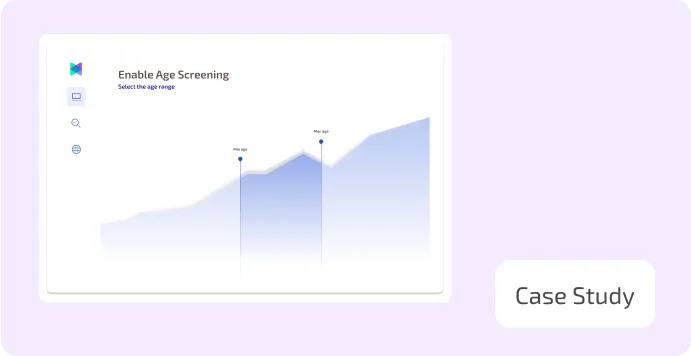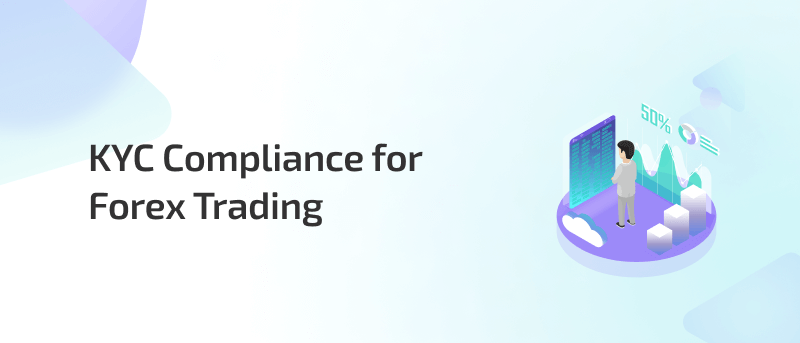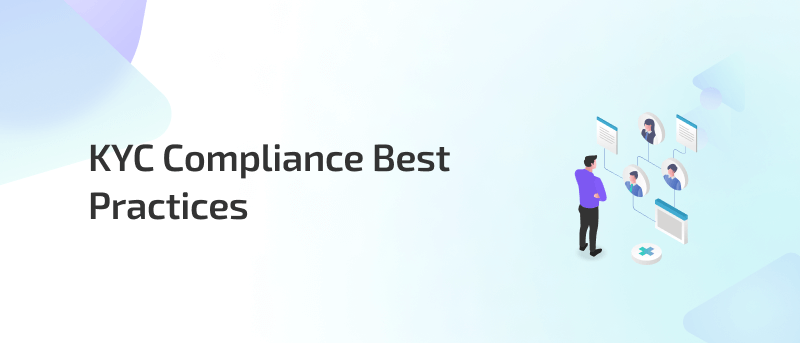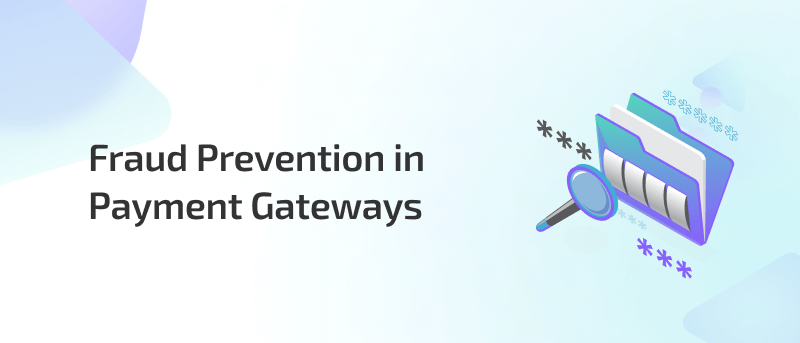.webp)
Published on
July 16, 2025
Credit Card Fraud: Key Types and Prevention Methods for Businesses
In this story

Accelerate AML Compliance: Meet Regulatory Demands with 80% Less Setup Time
.svg)
.svg)
Cybercriminals constantly refine credit card scamming methods to bypass traditional fraud detection systems and exploit new payment technologies.
Different types of credit card fraud involve the unauthorized use of a credit card or its information to make purchases or withdraw funds. This illicit activity can lead to substantial financial losses and damage to a business's reputation.
Businesses may be vulnerable to credit card fraud due to weak security protocols, inadequate employee training, or outdated technology. The consequences can include significant financial losses, potential legal liabilities, and a decline in customer trust.
Comply quickly with local/global regulations with 80% less setup time
.svg)
.svg)
9 Common Types of Credit Card Fraud
Financial institutions must constantly update their security systems to stay ahead of evolving techniques of credit card fraud that exploit digital vulnerabilities. Also, understanding the most common techniques of credit card fraud such as skimming, phishing, and account takeover, is essential for designing effective prevention strategies.
Below is an overview of the most common types of credit card fraud, each illustrated with real-world credit card fraud examples to help you understand how they occur in practice.
1. Card-Not-Present (CNP) Fraud
Card-Not-Present fraud, one of the most common types of credit card fraud, occurs when stolen card details are used to make purchases without the physical card, typically online, over the phone, or via mail orders. It’s one of the fastest-growing types of fraud due to the explosion of e-commerce.
Examples of credit card fraud: A fraudster acquires stolen card data from a data breach and uses it to purchase electronics from an online store.
Detection:
- Monitor for unusual purchasing patterns, such as large or rapid transactions made from a single account.
- Use AVS (Address Verification System) and CVV (Card Verification Value) checks to validate transactions.
- Employ machine learning tools to detect abnormal buying behaviors and flag potential fraud.
Prevention:
- Implement multi-factor authentication (MFA) for online transactions to add an extra layer of verification.
- Use tokenization or encryption for card data to minimize exposure.
- Require additional verification steps, such as sending a one-time passcode to the cardholder’s phone, for high-value transactions.
2. Card-Present Fraud
This is one of the types of credit card scams that involve the use of a physically stolen or cloned card for in-person transactions. It often happens before the cardholder realizes their card is missing or compromised.
Examples of credit card fraud: A pickpocket steals a wallet and quickly uses the credit card at multiple local businesses before it’s reported stolen.
Detection:
- Flag transactions where the physical card is swiped in locations far from the cardholder's usual location, indicating potential theft.
- Monitor for multiple, small purchases made in a short time frame, which could indicate someone testing a stolen card.
- Use real-time card authorization systems to spot any unusual activity immediately.
Prevention:
- Enforce EMV chip technology, which makes it more difficult for criminals to clone cards.
- Educate customers on reporting lost or stolen cards immediately.
- Use geo-fencing to block transactions from regions where the cardholder doesn't typically shop.
3. Credit Card Skimming
Skimming involves attaching malicious devices to legitimate payment terminals (like ATMs or gas pumps) to capture card information during use. Criminals later clone the card to make unauthorized purchases.
Credit card fraud example: A customer uses an ATM with a hidden skimmer installed. Their card data is copied and later used to withdraw funds fraudulently.
Detection:
- Monitor for unusual transaction locations or withdrawal patterns that suggest a compromised ATM or card reader.
- Use machine learning models that analyze purchase history to identify anomalous activity.
Prevention:
- Install anti-skimming technology on ATMs and card readers, such as advanced card reader sensors that detect tampering.
- Educate customers on how to spot signs of a compromised ATM or gas pump.
- Regularly audit all physical terminals for unauthorized devices or attachments.
4. Account Takeover
In the scenario of account takeover fraud, one of the popular types of credit card scams, criminals gain control of a legitimate cardholder’s account, often through phishing or social engineering, and change account details to block the real user from access.
Here is a credit abuse example: A fraudster uses leaked personal information to reset the password on an online banking account, changes the associated email and phone number, and makes unauthorized purchases.
Detection:
- Monitor for changes to account details, such as email address, phone number, or shipping address.
- Alert customers to any login attempts from unusual locations or IP addresses.
- Implement device fingerprinting to track the devices used to access accounts and flag unfamiliar devices.
Prevention:
- Use strong, multi-layered authentication methods, including biometric verification and security questions.
- Educate customers on identifying phishing emails and suspicious links.
- Implement session timeouts and alerts for any unusual activity, such as a password reset or change of account information.
5. Application Fraud
Here, the criminal uses stolen or fabricated personal information to apply for a new credit card under someone else’s identity. It often goes undetected until the victim notices anomalies in their credit report.
Example: One of the credit abuse examples is when a scammer submits a credit card application using another person’s Social Security number and employment data, racks up charges, and disappears before payments are due.
Detection:
- Cross-check personal information used in credit card applications against publicly available data or credit bureau reports to identify inconsistencies.
- Use AI and machine learning to identify patterns indicative of fraud in applications, such as the use of common fake identities or mismatched data.
- Apply velocity checks to flag multiple credit applications made within a short period.
Prevention:
- Implement identity verification systems and Know Your Customer (KYC) processes during the application stage.
- Use advanced address verification systems to confirm that the applicant’s details match the one on file with credit bureaus.
- Require applicants to submit additional documents for verification.
6. Counterfeit Card Fraud
This involves creating fake physical cards using stolen magnetic stripe or chip data. The counterfeit card is often indistinguishable from a legitimate one and can be used for high-value purchases.
Credit card fraud example: A cloned card made using skimming data is used to buy designer goods in retail stores, with no immediate alert raised.
Detection:
- Use machine learning algorithms to spot subtle patterns that suggest a cloned card is in use, such as unusual transaction types or locations.
- Perform regular checks on card terminals for potential tampering.
Prevention:
- Use EMV chip technology, which makes it significantly harder to clone cards.
- Educate customers on protecting their card information and promptly reporting any lost or stolen cards.
- Employ machine learning and analytics to flag transactions made with counterfeit cards.
7. Phishing and Vishing
Phishing uses fake emails or websites to trick users into providing their card details. Vishing uses similar tactics over the phone. Both aim to steal sensitive information for fraudulent transactions.
Example: A victim receives a fake security alert email, clicks a link, and unknowingly enters their credit card details on a spoofed website, which are then used to make unauthorized purchases.
Detection:
- Track instances of customers reporting suspicious calls or emails claiming to be from your financial institution.
- Analyze and flag emails that contain misleading or unsolicited requests for sensitive information.
- Monitor for spikes in complaints about phishing attempts during major phishing campaigns.
Prevention:
- Educate customers on how to identify fraudulent communications and encourage them to verify suspicious requests.
- Use multi-factor authentication (MFA) for accessing accounts or changing sensitive information, ensuring that even if credentials are compromised, additional security is in place.
8. Triangulation Fraud
Triangulation fraud involves a fake online storefront that takes real orders. The fraudster uses stolen card details to buy the item from a legitimate site and ships it to the buyer while collecting and storing the buyer’s real card information for later use.
Example: A consumer orders a discounted smartphone from a fake online store. The fraudster uses a stolen credit card to fulfill the order from a legitimate retailer and saves the customer’s real payment details for future fraud.
Prevention:
- Implement transaction monitoring tools to check for suspicious activity when a cardholder’s order is fulfilled by an unrelated seller.
- Educate customers about the risks of purchasing from untrusted, unknown, or obscure websites.
9. Friendly Fraud & Chargeback Fraud
This occurs when a customer makes a legitimate purchase and later disputes the transaction, falsely claiming it was unauthorized to get a refund while keeping the goods or services.
Example: A buyer receives a high-value item, then contacts their card issuer to reverse the charge, claiming the item was never delivered.
Detection & Prevention:
- Monitor for chargeback requests that occur shortly after a purchase, particularly for high-ticket items.
- Look for repeated chargeback behavior from the same customers.
- Implement AI-driven solutions to review the details of a transaction before issuing a refund to ensure it’s valid.
It is important to note that awareness of common credit card scamming methods, such as fake merchant websites and social engineering, is crucial for safe online shopping.
Popular Tools Used in Credit Card Fraud
Types of debit card frauds often vary by region, with ATM skimming being more common in physical locations and phishing dominating online channels. Also, Regulatory bodies require financial institutions to report on the frequency and impact of various types of debit card frauds to ensure better risk control.
This section outlines the most common methods and tools used by credit card fraudsters:
- Phishing: Sending deceptive emails or messages to trick individuals into revealing personal information.
- Malware: Installing malicious software on devices to capture sensitive data.
- Data Breaches: Hacking into company databases to steal large volumes of credit card information.
- Social Engineering: Manipulating individuals into divulging confidential information.
Red Flags to Watch for in Credit Card Fraud Detection
Identifying credit card fraud early is essential for minimizing risk. Here are key indicators and red flags to help detect fraudulent activity.
- Unusual transaction patterns, such as sudden high-value purchases.
- Multiple transactions in a short time frame.
- Purchases from high-risk countries or regions.
- Mismatch between shipping and billing addresses.
- Repeated declined transactions.
Further, banks are investing heavily in AI tools that can detect patterns across different types of credit card frauds, from counterfeit cards to digital account takeovers, as the rise of contactless payments has introduced new challenges related to different types of credit card frauds, prompting stricter security protocols.
How to Combat Credit Card Fraud in Financial Institutions
According to CNBC, Lalchand, a Principal in Deloitte's U.S. payments and Artificial Intelligence practice, said:
“When we come down to credit cards, financial institutions are investing more in the concept of fraud and fraud modernization, replacing older technology and having better fraud detection capabilities, and retuning their alerts,”, “That’s also causing a lot more on the detection side to go up.”
To combat credit card fraud in financial institutions, it’s essential to adopt proactive strategies that include:
- Utilize advanced encryption and tokenization to protect cardholder data. Regularly update and patch systems to address vulnerabilities.
- Use real-time fraud detection systems that analyze transaction patterns and flag anomalies.
- Adhere to guidelines set by regulatory bodies.
- Implement multi-factor authentication (MFA) to ensure that transactions are initiated by legitimate cardholders.
- Educate staff on recognizing fraudulent activities and the importance of adhering to security protocols.
Protect Credit Card Transactions with FOCAL
The FOCAL platform offers a smart fraud prevention solution that stops credit card fraud and other types of financial fraud before it affects your business. Using advanced machine learning, FOCAL quickly analyzes huge amounts of transaction data to catch both known and new fraud threats in real-time. This means FOCAL blocks suspicious transactions before they even reach your customers or your company.
FOCAL is built to be fast, easy to set up, and works smoothly with your existing systems. It takes just minutes to integrate and adds no extra delays to your transactions. With FOCAL, you get real-time transaction screening, continuous monitoring for unusual activity, and the ability to block fraud on the spot.
Curious to see how FOCAL works? Request a demo today and find out how our fraud prevention tools can keep your business and customers safe from credit card fraud.
Frequently Asked Questions
Q1. What Type of Credit Card Fraud is Most Common?
Card-not-present (CNP) fraud is among the most common credit card frauds, especially with the rise of online shopping. This type of fraud occurs when the physical card is not present at the point of sale, making it easier for fraudsters to use stolen card information for online purchases or phone orders.
Q2. How to Spot a Card Skimmer?
Card skimmers are devices criminals use to steal card information, and you can spot them by looking for unusual attachments, loose or bulky card slots, or suspicious keypads on ATMs or point-of-sale terminals.
Q3. What is the Difference Between Credit Card Fraud and Identity Theft?
Credit card fraud occurs when someone uses stolen credit card information to make unauthorized purchases, while identity theft involves stealing personal information, such as your name or Social Security number, to commit fraud or open accounts in your name.
Streamline Compliance: Achieve 80% Faster Setup for Fraud Prevention
.svg)
.svg)

How Aseel reduced onboarding time by more than 87% using FOCAL
Learn how FOCAL empowered Aseel to achieve new milestones.
.svg)
.svg)
Mastering Fraud Prevention: A Comprehensive Guide for KSA and MENA Businesses
51% of organizations fell victim to fraud in the last two years, don't be caught off guard, act proactively.
.svg)
.svg)
Featured blog posts
.svg)
AI-Driven Precision in Fraud Risk and AML Compliance
.svg)
.svg)

.svg)
.png)






.webp)




.svg)

_FastestImplementation_Small-Business_GoLiveTime.png)

_HighPerformer_Small-Business_HighPerformer.png)
_Leader_Leader.png)



%20(1).webp)